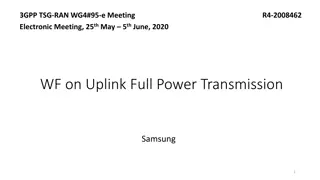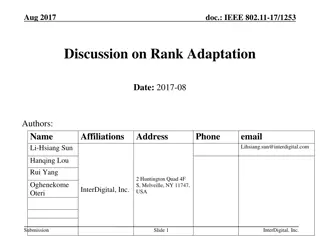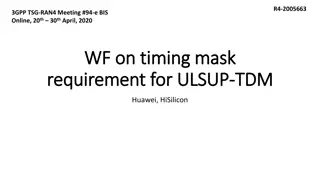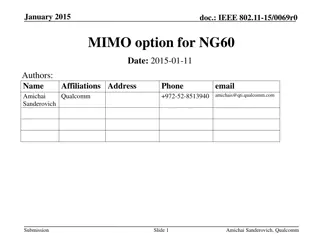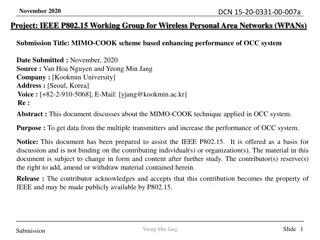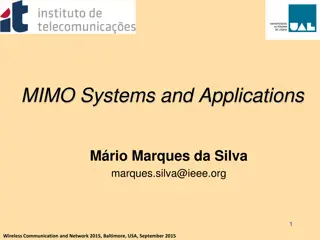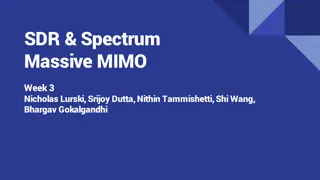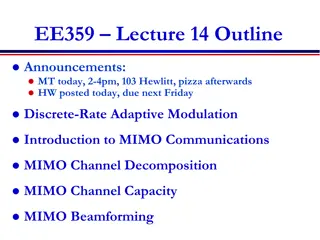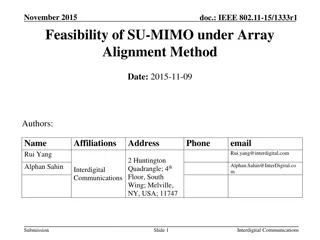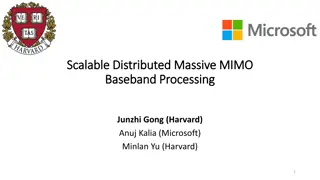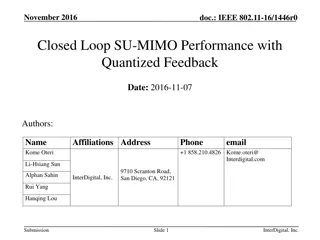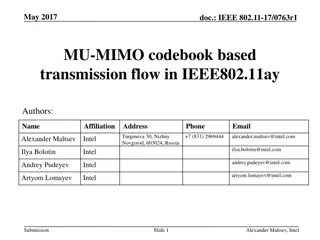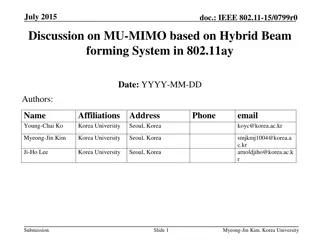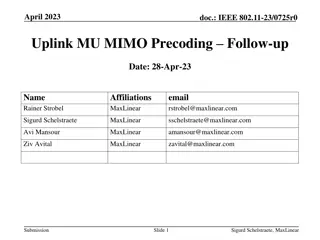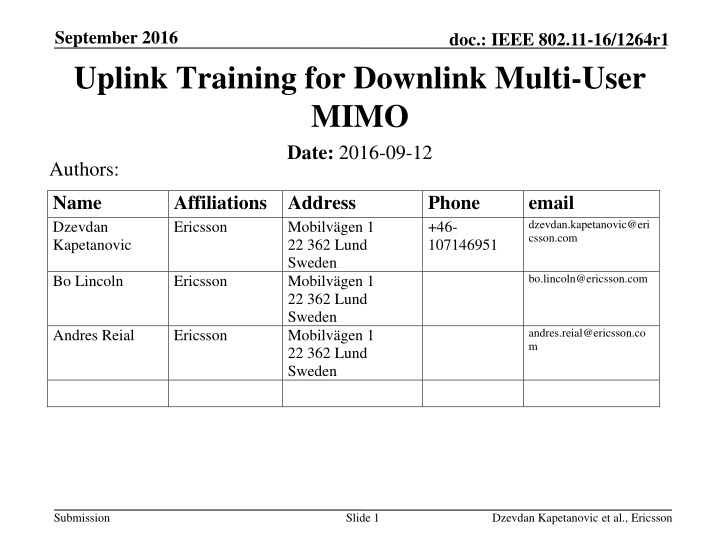
Uplink Training for Downlink Multi-User MIMO in IEEE 802.11-16/1264r1
"Explore the innovative approach of uplink training in DL MU-MIMO systems, addressing challenges of time consumption and beam accuracy. Learn about channel reciprocity calibration and efficient training procedures for enhanced performance."
Download Presentation

Please find below an Image/Link to download the presentation.
The content on the website is provided AS IS for your information and personal use only. It may not be sold, licensed, or shared on other websites without obtaining consent from the author. If you encounter any issues during the download, it is possible that the publisher has removed the file from their server.
You are allowed to download the files provided on this website for personal or commercial use, subject to the condition that they are used lawfully. All files are the property of their respective owners.
The content on the website is provided AS IS for your information and personal use only. It may not be sold, licensed, or shared on other websites without obtaining consent from the author.
E N D
Presentation Transcript
September 2016 Uplink Training for Downlink Multi-User MIMO Date: 2016-09-12 Authors: doc.: IEEE 802.11-16/1264r1 Name Dzevdan Kapetanovic Affiliations Address Ericsson Phone +46- 107146951 email dzevdan.kapetanovic@eri csson.com Mobilv gen 1 22 362 Lund Sweden Mobilv gen 1 22 362 Lund Sweden Mobilv gen 1 22 362 Lund Sweden bo.lincoln@ericsson.com Bo Lincoln Ericsson andres.reial@ericsson.co m Andres Reial Ericsson Submission Slide 1 Dzevdan Kapetanovic et al., Ericsson
September 2016 doc.: IEEE 802.11-16/1264r1 Introduction Training with Tx/Rx beam sectorization is the current training method for DL MU-MIMO in 802.11ay This method is transparent to any uplink-downlink channel differences Problems: time consuming (as much training as number of sectors), beam accuracy can be low (more accuracy -> more training overhead) This method is presented as Myth #3 in [1]: it does not exploit the full potential of Massive MIMO systems Submission Slide 2 Dzevdan Kapetanovic et al., Ericsson
September 2016 doc.: IEEE 802.11-16/1264r1 Introduction Alternative approach: perform uplink training Pros: Less training overhead, superior beam accuracy, not sensitive to LOS assumption Cons: UL/DL channel reciprocity not guaranteed -> possibly requires calibration Submission Slide 3 Dzevdan Kapetanovic et al., Ericsson
September 2016 doc.: IEEE 802.11-16/1264r1 Calibration for Channel Reciprocity AP has Tx and Rx chain gain imbalances ??? and ??? (diagonal matrices) ? AP calibration estimates ?????? AP calibration is well-known and well-studied, and it works [2] Calibration of STAs not necessary for DL transmission Submission Slide 4 Dzevdan Kapetanovic et al., Ericsson
September 2016 doc.: IEEE 802.11-16/1264r1 Uplink Training Procedure Assuming calibration has been performed 1. AP transmits an uplink training trigger frame to a specific group of STAs 2. Each STA in the group transmits a training packet 3. AP estimates (jointly) the received channel (or any transformation of the channel) 4. AP uses the estimated channel for downlink transmission Submission Slide 5 Dzevdan Kapetanovic et al., Ericsson
September 2016 doc.: IEEE 802.11-16/1264r1 Uplink Training Procedure Trigger Frame Beamformed Data Estimate CSI AP Training Packet STA 1 Training Packet STA 2 These packets are short! Submission Slide 6 Dzevdan Kapetanovic et al., Ericsson
September 2016 doc.: IEEE 802.11-16/1264r1 Massive MIMO Deployment (2.3 GHz) 0.5 m between UEs, 40-50 m between BS and UE, 8 m linear array Submission Slide 7 Dzevdan Kapetanovic et al., Ericsson
September 2016 doc.: IEEE 802.11-16/1264r1 Performance TDD significantly better than hybrid beamforming and FDD Submission Slide 8 Dzevdan Kapetanovic et al., Ericsson
September 2016 doc.: IEEE 802.11-16/1264r1 Summary Proposed an uplink training procedure for beamforming construction Pros: Significantly less training overhead, enables superior beamforming Cons: Possibly calibration assumptions (although verified in practice to work) Submission Slide 9 Dzevdan Kapetanovic et al., Ericsson
September 2016 doc.: IEEE 802.11-16/1264r1 References [1] E. Bj rnsson, E. G. Larsson, T. Marzetta, Massive MIMO: Ten Myths and One Critical Question , IEEE Comm. Mag., Feb. 2016 [2] J. Vieira et. al., Reciprocity Calibration for Massive MIMO: Proposal, Modeling and Validation , IEEE Trans. Wire. Comm., 2016 Submission Slide 10 Dzevdan Kapetanovic et al., Ericsson
September 2016 doc.: IEEE 802.11-16/1264r1 Straw Poll Do you believe the uplink training mechanism presented here is worth considering for further study? Y/N/A: Submission Slide 11 Dzevdan Kapetanovic et al., Ericsson

